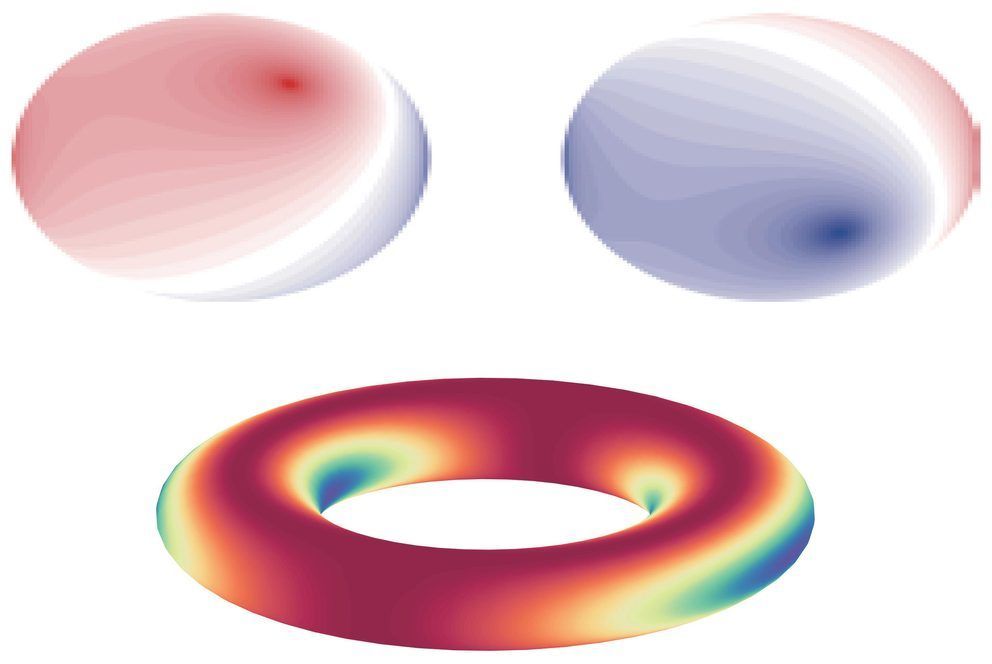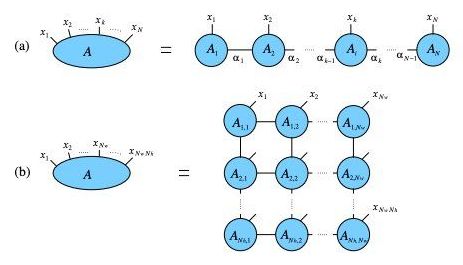The fabric of space-time may get its robustness from a network of quantum particles, according to a principle called quantum error correction.
Category: particle physics – Page 563

Hard as a diamond? Scientists predict new forms of superhard carbon
Superhard materials can slice, drill and polish other objects. They also hold potential for creating scratch-resistant coatings that could help keep expensive equipment safe from damage.
Now, science is opening the door to the development of new materials with these seductive qualities.
Researchers have used computational techniques to identify 43 previously unknown forms of carbon that are thought to be stable and superhard—including several predicted to be slightly harder than or nearly as hard as diamonds. Each new carbon variety consists of carbon atoms arranged in a distinct pattern in a crystal lattice.

Jupiter Magnetic Field Simulated Using CERN High Energy Electron Beam
The European Organization for Nuclear Research, or CERN, is most famous for its particle collider, but it also has facilities that can test for other high-energy environments similar to those found in space. Now those facilities are being used to test future spacecraft to see if they are radiation-proof.
The European Space Agency (ESA) will launch the Jupiter Icy Moons Explorer, or JUICE, mission in 2022. Before then, ESA scientists wanted to know what kinds of environmental stresses the explorer will be subjected to when it braves Jupiter’s massive magnetic field. The magnetic field has a volume of a million times that of Earth’s magnetosphere, and trapped within the field are energetic charged particles. These particles form radiation belts which bombard visiting craft with high levels of radiation, which can be harmful to electronics.
To see how the JUICE hardware will handle this radiation, the ESA has borrowed the world’s most intense radiation beam — one located at a CERN facility called VESPER (Very energetic Electron facility for Space Planetary Exploration missions in harsh Radiative environments). Now it is working alongside CERN to develop the testing protocol for other future missions too, such as the proposed Ice Giants mission to Neptune and Uranus.
[quant-ph/9706059] Introduction of a Quantum of Time (“chronon”), and its Consequences for Quantum Mechanics
Abstract: In this review-article, we discuss the consequences of the introduction of a quantum of time tau_0 in the formalism of non-relativistic quantum mechanics (QM) by referring ourselves in particular to the theory of the “chronon” as proposed by P.Caldirola. Such an interesting “finite difference” theory, forwards —at the classical level— a solution for the motion of a particle endowed with a non-negligible charge in an external electromagnetic field, overcoming all the known difficulties met by Abraham-Lorentz’s and Dirac’s approaches (and even allowing a clear answer to the question whether a free falling charged particle does or does not emit radiation), and —at the quantum level— yields a remarkable mass spectrum for leptons. After having briefly reviewed Caldirola’s approach, we compare one another the new Schroedinger, Heisenberg and density-operator (Liouville-von Neumann) pictures resulting from it. Moreover, for each representation, three (retarded, symmetric and advanced) formulations are possible, which refer either to times t and t-tau_0, or to times t-tau_0/2 and t+tau_0/2, or to times t and t+tau_0, respectively. It is interesting to notice that, e.g., the “retarded” QM does naturally appear to describe QM with friction, i.e., to describe dissipative quantum systems (like a particle moving in an absorbing medium). In this sense, discretized QM is much richer than the ordinary one. When the density matrix formalism is applied to the solution of the measurement problem in QM, very interesting results are met, so as a natural explication of “decoherence”.
From: [view email].

Exotic Physics Phenomenon Involving Time Reversal Observed for First Time
An exotic physical phenomenon, involving optical waves, synthetic magnetic fields, and time reversal, has been directly observed for the first time, following decades of attempts. The new finding could lead to realizations of what are known as topological phases, and eventually to advances toward fault-tolerant quantum computers, the researchers say.
The new finding involves the non-Abelian Aharonov-Bohm Effect and is published in the journal Science by MIT graduate student Yi Yang, MIT visiting scholar Chao Peng (a professor at Peking University), MIT graduate student Di Zhu, Professor Hrvoje Buljan at University of Zagreb in Croatia, Francis Wright Davis Professor of Physics John Joannopoulos at MIT, Professor Bo Zhen at the University of Pennsylvania, and MIT professor of physics Marin Soljačić.
The finding relates to gauge fields, which describe transformations that particles undergo. Gauge fields fall into two classes, known as Abelian and non-Abelian. The Aharonov-Bohm Effect, named after the theorists who predicted it in 1959, confirmed that gauge fields — beyond being a pure mathematical aid — have physical consequences.

Synthetic antiferromagnets host room-temperature skyrmions
Researchers have succeeded in stabilizing antiferromagnetic skyrmions in an ordinary material system at room temperature for the first time. The new result will be important for future real-world applications that make use of these tiny magnetic particle objects.
Magnetic skyrmions are quasiparticle magnetic spin configurations with a swirling vortex-like structure. They can be thought of as 2D knots (or “spin textures”) in which the magnetic moments rotate about 360° within a plane. They were first discovered about ten years ago in non-centrosymmetric manganese-silicon and cobalt-iron-silicon crystals, but they are now known to occur in a wide range of materials, including ultra-thin magnetic multilayers, which are much more compatible with potential future applications.
Magnetic skyrmions could be used as storage bits in next-generation memories that have a much higher density than today’s disk drives thanks to their small size and the fact that they can be efficiently controlled with spin currents. They are also robust to external perturbations.

Simulating quantum many-body systems on Amazon Web Services
Quantum many-body systems (QMBs), which are physical systems made up of multiple interacting particles, are among the most challenging structures to reproduce in numerical simulations. In the past, researchers have attempted to simulate these systems using a variety of techniques, including Monte Carlo simulations and even exact diagonalizations.
Methods involving tensor networks (TNs), mathematical concepts that can be applied in a variety of scientific fields, have also shown some potential for the simulation of QMBs. However, so far, these techniques have only been successfully applied to small systems or those with a simple geometry.
In a recent study, researchers at the University of Central Florida were able to simulate QMBs on Amazon Web Services using a TN-based method. Their paper, pre-published on arXiv, highlights some of the potential advantages and implications of using cloud services for research purposes.

Scientists were hunting for dark matter… then this happened
Elements is more than just a science show. It’s your science-loving best friend, tasked with keeping you updated and interested on all the compelling, innovative and groundbreaking science happening all around us. Join our passionate hosts as they help break down and present fascinating science, from quarks to quantum theory and beyond.


Exotic physics phenomenon is observed for first time
An exotic physical phenomenon, involving optical waves, synthetic magnetic fields, and time reversal, has been directly observed for the first time, following decades of attempts. The new finding could lead to realizations of what are known as topological phases, and eventually to advances toward fault-tolerant quantum computers, the researchers say.
The new finding involves the non-Abelian Aharonov-Bohm Effect and is reported today in the journal Science by MIT graduate student Yi Yang, MIT visiting scholar Chao Peng (a professor at Peking University), MIT graduate student Di Zhu, Professor Hrvoje Buljan at University of Zagreb in Croatia, Francis Wright Davis Professor of Physics John Joannopoulos at MIT, Professor Bo Zhen at the University of Pennsylvania, and MIT professor of physics Marin Soljacic.
The finding relates to gauge fields, which describe transformations that particles undergo. Gauge fields fall into two classes, known as Abelian and non-Abelian. The Aharonov-Bohm Effect, named after the theorists who predicted it in 1959, confirmed that gauge fields—beyond being a pure mathematical aid—have physical consequences.